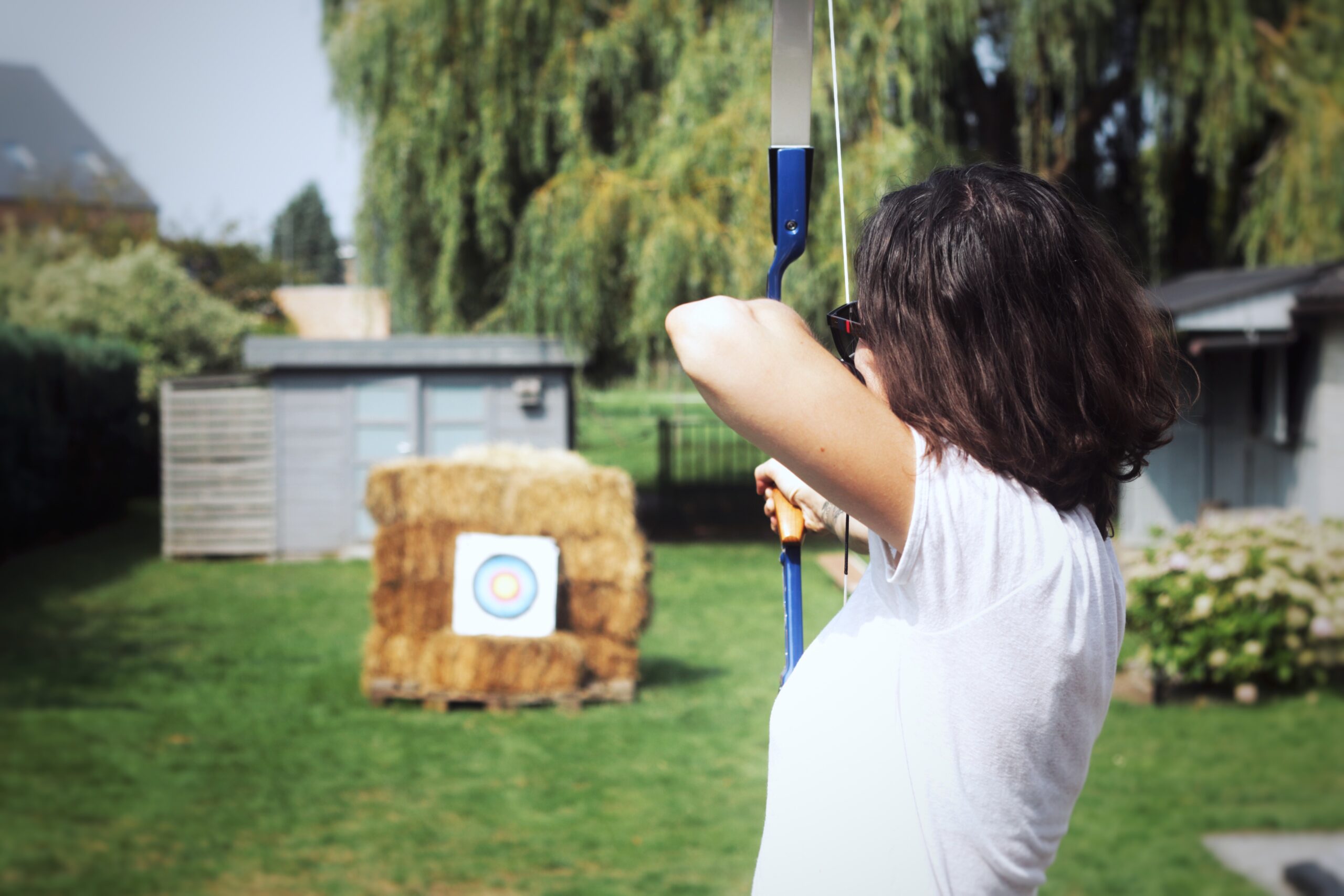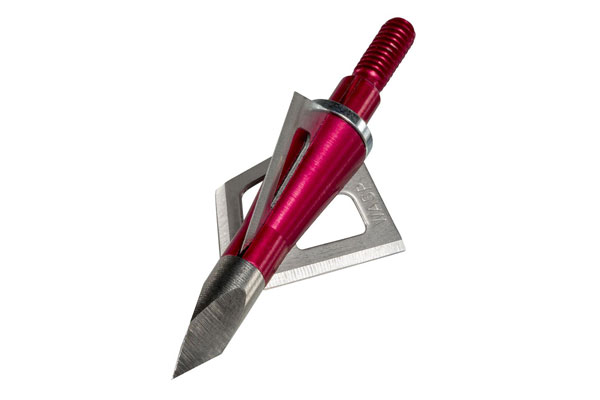Creating a Backyard Archery Range
Originally posted on Porch.com
A backyard archery range provides you with a convenient place to practice your sport and can certainly save you from paying fees to practice at commercial ranges. However, because archery can be a dangerous pursuit, it’s essential to understand the safety concerns of building your own backyard range. Here we’ll explore how to create your ideal archery range for you and your household, as well as actionable tips you can take to ensure its safety.
The Advantages of Constructing a Backyard Archery Range
Perhaps the most significant advantage of creating your own archery range on your property is the fun you’re bound to have. Not only can you as an individual have fun, but your family and friends may also enjoy using the range. You can host your own archery tournaments, providing loads of entertainment for backyard barbecues, birthdays, and even holidays.
Archery Requires Practice to Hone Skills
Becoming proficient and then advanced as an archer requires self-discipline and practice. Adults can benefit from this practice as they hone their skills, but the hard work it takes to make improvements is something that older kids can benefit from too. There are bows designed that are ideally suited to young archers. As kids acquire and develop their skills, they’re likely to grow in self-confidence too. Of course, kids will also develop a greater sense of responsibility as they learn to practice safely.
Stress Relief
As a sport and enjoyable hobby, archery offers all participants the opportunity to alleviate stress. Any physical activity can allow the body to release feel-good endorphins that enhance both physical and mental health. By practicing archery routinely in the morning or afternoon, you may be able to manage chronic stress related to the job or some other aspect of life more easily.
Improve Physical Fitness
Archery may not involve running for miles or diving from a high dive, but it does promote calorie burning. According to the World Archery Federation, archers can burn between 100-150 calories per 30 minutes they spend practicing. Archery also provides an excellent workout for core muscles such as the arms and chest and promotes improved hand-eye coordination.
Safety
When designing and using a backyard archery range, safety must be a priority. After all, a bow and arrows are items of weaponry and are popularly used for hunting today. The fact is, not every backyard may be conducive to this type of pastime. Ideally, the best settings for this type of pursuit are in spacious yards on properties with plenty of space between homes. A fenced yard is also a safer site for setting up an archery range as it’s better protected from children or loose pets who could wander into the yard.
Common Sense Safety Tips
Even though you, as the range designer, may understand the necessity to take safety seriously, other members of your household, particularly children, may not. Therefore, it’s important to lay some ground rules down for anyone using your course. For instance, it’s not wise to practice archery when children play in the yard or pets are outdoors.
It’s also essential to make sure that your outdoor lighting is adequate and that you have a large backdrop behind your target in case the inevitable arrow goes astray. It’s also unwise to let anyone attempt to shoot without any instruction.
Permits
Because of the inherent safety risks associated with archery, many municipalities have banned residential ranges. This is most often true in urban areas or highly congested suburban settings. However, no matter where you live, it’s important to check with your town or city to see if it’s legal in your area to practice archery in your backyard or if you need a permit to have your own archery range.
Check with the HOA
Some homeowners associations disallow archery in neighborhoods. In addition to checking with your town hall, you may also want to consult with your HOA if you have one.
Safe Equipment
As mentioned, a backstop is a necessity when creating a backyard archery range. You’ll need to build or purchase a safe backstop that’s larger than your intended target and is also reliably capable of stopping arrows. Protective gear for archers like finger tabs is also important to have on hand.
Talk to Your Insurer
Just as you might discuss adding a swimming pool to your property with your insurance provider, you should also mention your archery range, especially if you intend to let others use the course. You should understand your liabilities and hear out your agent regarding any other suggested safety steps you can take to protect visitors to your yard from injuries.
Targets
The targets you select and place will be the central focus of your range, so it makes sense to choose them carefully. When placing them, it’s ideal to leave at least 25 feet behind them of open property space–your property. You should also face them so that you’re never shooting toward the street or a neighbor’s yard or home. It’s better to hit your garage with an errant arrow than a human, pet, or someone else’s private property.
Some ideal targets you might consider using include:
- Portable targets (these are smaller and so easier to store. Be sure to shoot down toward them to prevent arrows from going too far astray)
- Large stationary targets (these tend to last longer than portable models but may be cumbersome to move once installed)
- 3D targets (popular with bowhunters, these targets are small and easier to miss, so be sure you have the ideal setting to use them)
Some common types of backyard targets include hay bales and ultra-durable foam, and plywood. Always check your targets to ensure they’re undamaged and able to perform before using them.
Also, remember that your backstop is essential to your archery range setup. You can purchase commercial backstops that are professionally tested, or you can construct your own. If you go the DIY route as many do, take care to use solid and durable materials and check on your backstop routinely to ensure that its construction is sound.
Purchase a Bow
There are many bows to choose from when shopping for archery equipment. If you’re new to the sport or members of your household are new, you may want to purchase a beginner’s bow. It’s helpful to have these on hand if you have visitors to your home who want to give archery a try.
Recurve vs. Compound Bows
As you consider bows for your range, you’ll likely need to choose between recurve and compound bows. Recurve bows tend to be more lightweight than compound bows, but they also tend to require more upper body and arm strength to use. However, they have fewer parts, so they’re easier to take care of than compound bows.
Compound bows, on the other hand, are popular with both hunters and stationary target archers. One of the chief advantages of a compound bow is that it’s so customizable and easy for archers to adjust to their preferences. Compound bows also require less strength, which is an important consideration, especially if you’re new to the sport.
Choose Your Arrows
Arrows range in price and quality. If you’re a beginner or even intermediate, it’s a good idea to use cheap arrows for backyard range practice. These will get dinged up over time, but they won’t set you back substantial expense either. Wooden arrows are cheap, project reasonably well, and have an authenticity that fiberglass arrows simply can’t boast. Some archers prefer to use the arrows that were relied upon centuries ago by ancient armies and hunters.
On the other hand, fiberglass arrows are also inexpensive and usually more consistent in their construction from batch to batch. Aluminum arrows are a step up cost-wise and can be customized, but they aren’t as strong as fiberglass or wood arrows. Bowhunters tend to favor carbon arrows because of their durability and speed. However, Olympic archers and other archery pros prefer composite arrows because of their accuracy, durability, and high-quality construction. These, of course, are the most expensive of them all.
If you’re a bowhunter looking to get some practice shooting in, practice points are a great addition to your backyard archery arsenal.
Extras
When designing your archery range, there are also a few extras that you may want to include. For instance, a bow stand or a few stands will allow you to maintain your bow better and prevent it from becoming damaged or dirty. If you intend to have backyard tournaments, a few stands will not go amiss.
Also, if you’re serious about improving your skills or your children’s skills, consider investing in archery lessons. This way, you’ll develop proper bow usage and technique. Instructors have considerable knowledge about archery equipment, too, so they can help you choose the ideal gear for you and other archers in your household.
Keep these tips in mind as you plan and build your backyard archery range. Remember to prioritize safety so that no one becomes injured during archery practice. You’ll also be able to find some helpful DIY range tips by scouring YouTube for DIY backstops and targets.
Level Up Your Bowhunting Game With Wasp
It’s important to get in your practice at the range, but it’s even more important to make sure you’re hunting with the right broadhead. Wasp’s wide range of broadheads are all proven to fly straighter, cut deeper, and leave perfect blood trails. Get yours today and discover why nothing stings like a Wasp.
View All Posts

